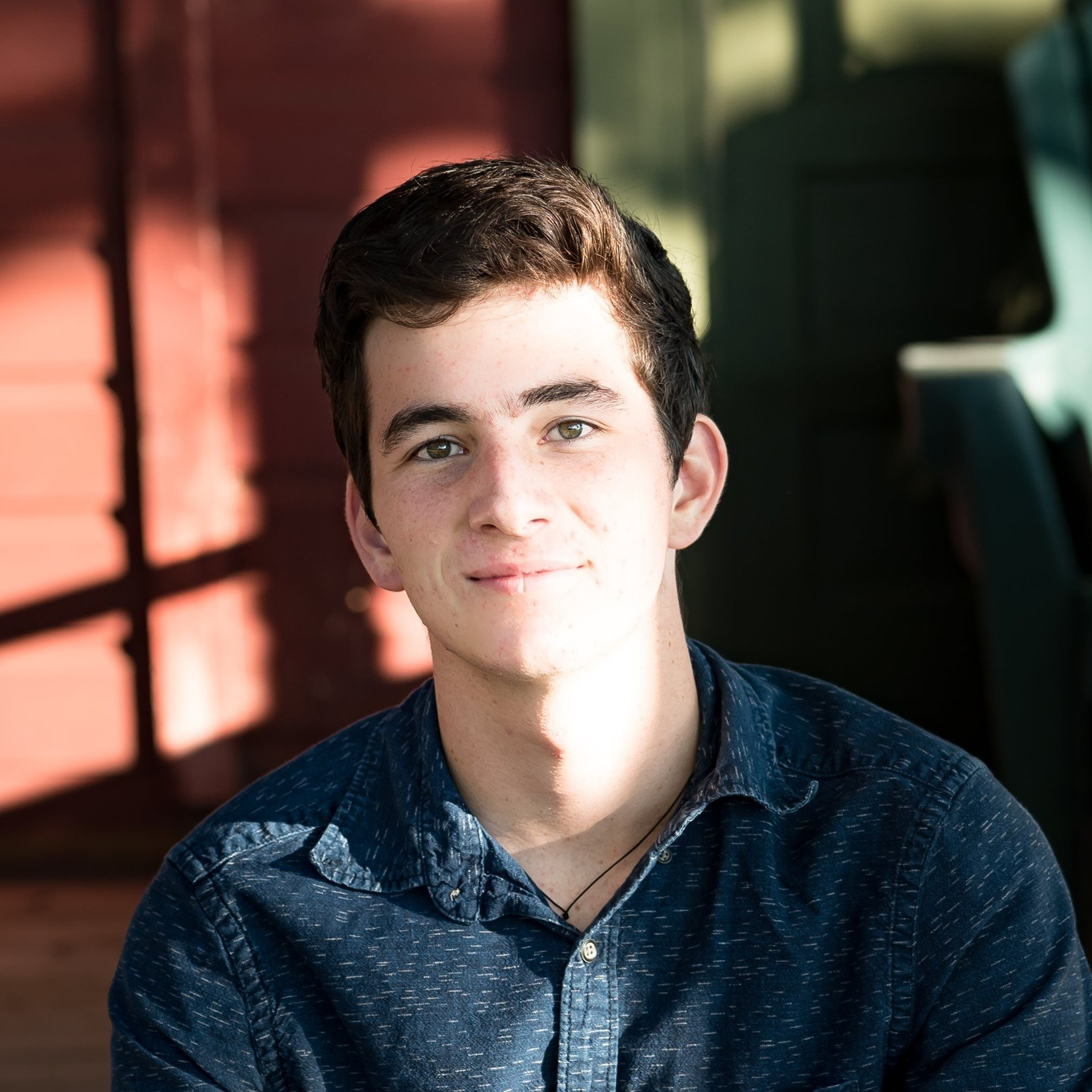[[0.5451,-0.545],[0.4931,-0.5437],[0.4644,-0.5009],[0.4509,-0.4512],[0.4328,-0.4023],[0.4146,-0.3533],[0.3964,-0.3044],[0.3782,-0.2555],[0.3599,-0.2065],[0.3417,-0.1576],[0.3235,-0.1087],[0.3052,-0.0597],[0.287,-0.0108],[0.2688,0.0381],[0.2505,0.0871],[0.2323,0.136],[0.2141,0.1849],[0.1959,0.2339],[0.1776,0.2828],[0.1594,0.3317],[0.1412,0.3807],[0.1229,0.4296],[0.1047,0.4785],[0.0867,0.5276],[0.066,0.5755],[0.0422,0.6219],[0.0151,0.6663],[-0.0192,0.7057],[-0.0557,0.743],[-0.1007,0.7694],[-0.1492,0.7885],[-0.2007,0.7967],[-0.2528,0.7988],[-0.305,0.797],[-0.357,0.792],[-0.4076,0.7792],[-0.4582,0.7693],[-0.481,0.7293],[-0.481,0.6771],[-0.481,0.6249],[-0.481,0.5727],[-0.481,0.5205],[-0.4505,0.5086],[-0.4008,0.5244],[-0.3502,0.5373],[-0.2987,0.5446],[-0.2477,0.5358],[-0.2101,0.5],[-0.1869,0.4534],[-0.1698,0.4041],[-0.1548,0.3541],[-0.1453,0.3043],[-0.1658,0.2563],[-0.1863,0.2083],[-0.2068,0.1603],[-0.2273,0.1123],[-0.2479,0.0642],[-0.2684,0.0162],[-0.2889,-0.0318],[-0.3094,-0.0798],[-0.3299,-0.1278],[-0.3505,-0.1758],[-0.371,-0.2239],[-0.3915,-0.2719],[-0.412,-0.3199],[-0.4325,-0.3679],[-0.4531,-0.4159],[-0.4736,-0.4639],[-0.4941,-0.512],[-0.5146,-0.56],[-0.5351,-0.608],[-0.5557,-0.656],[-0.5762,-0.704],[-0.5967,-0.7521],[-0.6016,-0.7897],[-0.5493,-0.7897],[-0.4971,-0.7897],[-0.4449,-0.7897],[-0.3927,-0.7897],[-0.3405,-0.7897],[-0.2968,-0.7769],[-0.2769,-0.7286],[-0.2569,-0.6804],[-0.237,-0.6321],[-0.2171,-0.5839],[-0.1971,-0.5356],[-0.1772,-0.4873],[-0.1572,-0.4391],[-0.1373,-0.3908],[-0.1173,-0.3426],[-0.0974,-0.2943],[-0.0774,-0.246],[-0.0575,-0.1978],[-0.0375,-0.1495],[-0.0176,-0.1013],[0.0033,-0.0763],[0.0212,-0.1254],[0.0391,-0.1744],[0.057,-0.2235],[0.075,-0.2725],[0.0929,-0.3216],[0.1108,-0.3706],[0.1287,-0.4197],[0.1466,-0.4687],[0.1646,-0.5177],[0.1836,-0.5663],[0.2035,-0.6146],[0.2271,-0.6611],[0.2568,-0.704],[0.2917,-0.7427],[0.3352,-0.7714],[0.3842,-0.7891],[0.4355,-0.7986],[0.4877,-0.7988],[0.5397,-0.7946],[0.5906,-0.7831],[0.6016,-0.7394],[0.6016,-0.6872],[0.6016,-0.635],[0.6016,-0.5827],[0.5966,-0.5364]]
[[0.8059,0.4056],[0.7511,0.4056],[0.6964,0.4056],[0.6416,0.4056],[0.5868,0.4056],[0.5321,0.4056],[0.4773,0.4056],[0.4225,0.4056],[0.3678,0.4056],[0.3136,0.3997],[0.2661,0.3753],[0.2114,0.3753],[0.1566,0.3753],[0.1018,0.3753],[0.047,0.3753],[-0.0077,0.3753],[-0.0625,0.3753],[-0.1173,0.3753],[-0.172,0.3753],[-0.2268,0.3753],[-0.2796,0.3803],[-0.3285,0.4036],[-0.3832,0.4056],[-0.438,0.4056],[-0.4927,0.4056],[-0.5475,0.4056],[-0.6023,0.4056],[-0.657,0.4056],[-0.7118,0.4056],[-0.7666,0.4056],[-0.8213,0.4045],[-0.8713,0.3837],[-0.9049,0.3412],[-0.9141,0.2877],[-0.9141,0.2329],[-0.9141,0.1781],[-0.9141,0.1234],[-0.9141,0.0686],[-0.9141,0.0138],[-0.9141,-0.0409],[-0.9141,-0.0957],[-0.9141,-0.1505],[-0.9141,-0.2052],[-0.9087,-0.2594],[-0.8794,-0.305],[-0.8317,-0.3307],[-0.825,-0.38],[-0.7878,-0.4056],[-0.733,-0.4056],[-0.6783,-0.4056],[-0.6235,-0.4056],[-0.5687,-0.4056],[-0.514,-0.4052],[-0.499,-0.3577],[-0.4732,-0.3387],[-0.4721,-0.3934],[-0.4225,-0.4056],[-0.3677,-0.4056],[-0.3278,-0.3827],[-0.3242,-0.3308],[-0.2762,-0.3056],[-0.2223,-0.3034],[-0.1676,-0.3034],[-0.1128,-0.3034],[-0.058,-0.3034],[-0.0032,-0.3034],[0.0515,-0.3034],[0.1063,-0.3034],[0.1611,-0.3034],[0.2158,-0.3034],[0.2706,-0.3034],[0.3179,-0.3292],[0.3722,-0.3338],[0.427,-0.3338],[0.4817,-0.3338],[0.5365,-0.3338],[0.5913,-0.3338],[0.6461,-0.3338],[0.7008,-0.3338],[0.7556,-0.3338],[0.8104,-0.3337],[0.8622,-0.318],[0.9,-0.2791],[0.914,-0.2268],[0.9141,-0.172],[0.9141,-0.1173],[0.9141,-0.0625],[0.9141,-0.0077],[0.9141,0.047],[0.9141,0.1018],[0.9141,0.1566],[0.9141,0.2113],[0.9141,0.2661],[0.9115,0.3207],[0.8869,0.369],[0.842,0.3994],[0.2285,0.3244],[0.1924,0.2833],[0.1562,0.2421],[0.12,0.201],[0.0839,0.1599],[0.0477,0.1187],[0.0116,0.0776],[-0.0246,0.0922],[-0.0607,0.1333],[-0.0969,0.1744],[-0.1331,0.2156],[-0.1692,0.2567],[-0.2054,0.2979],[-0.239,0.3378],[-0.1842,0.3378],[-0.1295,0.3378],[-0.0747,0.3378],[-0.0199,0.3378],[0.0348,0.3378],[0.0896,0.3378],[0.1444,0.3378],[0.1991,0.3378],[-0.55,-0.3682],[-0.6048,-0.3682],[-0.6596,-0.3682],[-0.7143,-0.3682],[-0.7691,-0.3682],[-0.7854,-0.3338],[-0.7306,-0.3338],[-0.6758,-0.3338],[-0.621,-0.3338],[-0.5663,-0.3338],[-0.5362,-0.3585],[-0.4104,-0.3682],[-0.4358,-0.3388],[-0.3861,-0.3338],[-0.3655,-0.3679],[-0.3436,-0.2959],[-0.3984,-0.2961],[-0.4531,-0.2961],[-0.5079,-0.2961],[-0.5627,-0.2961],[-0.6174,-0.2961],[-0.6722,-0.2961],[-0.727,-0.2961],[-0.7817,-0.2961],[-0.8356,-0.2897],[-0.8719,-0.2506],[-0.8764,-0.1963],[-0.8764,-0.1416],[-0.8764,-0.0868],[-0.8764,-0.032],[-0.8764,0.0227],[-0.8764,0.0775],[-0.8764,0.1323],[-0.8764,0.187],[-0.8764,0.2418],[-0.8764,0.2966],[-0.8569,0.3463],[-0.8081,0.3679],[-0.7533,0.3679],[-0.6985,0.3679],[-0.6437,0.3679],[-0.589,0.3679],[-0.5342,0.3679],[-0.4794,0.3679],[-0.4247,0.3679],[-0.3699,0.3679],[-0.3164,0.3599],[-0.277,0.3224],[-0.2409,0.2813],[-0.2047,0.2402],[-0.1685,0.199],[-0.1324,0.1579],[-0.0962,0.1168],[-0.06,0.0757],[-0.0263,0.0345],[-0.0624,-0.0066],[-0.0986,-0.0477],[-0.1348,-0.0889],[-0.1709,-0.13],[-0.2071,-0.1711],[-0.2433,-0.2123],[-0.2794,-0.2534],[-0.221,-0.2438],[-0.1848,-0.2026],[-0.1487,-0.1615],[-0.1125,-0.1204],[-0.0763,-0.0792],[-0.0402,-0.0381],[-0.004,0.0031],[0.0321,-0.0292],[0.0683,-0.0703],[0.1044,-0.1114],[0.1406,-0.1526],[0.1767,-0.1937],[0.2129,-0.2349],[0.227,-0.266],[0.1723,-0.266],[0.1175,-0.266],[0.0627,-0.266],[0.008,-0.266],[-0.0468,-0.266],[-0.1016,-0.266],[-0.1564,-0.266],[-0.2111,-0.266],[0.8719,-0.2506],[0.8355,-0.2897],[0.7817,-0.2961],[0.7269,-0.2961],[0.6722,-0.2961],[0.6174,-0.2961],[0.5626,-0.2961],[0.5079,-0.2961],[0.4531,-0.2961],[0.3983,-0.2961],[0.3436,-0.2959],[0.2957,-0.2722],[0.2596,-0.231],[0.2234,-0.1899],[0.1872,-0.1488],[0.1511,-0.1076],[0.1149,-0.0665],[0.0787,-0.0254],[0.0426,0.0158],[0.0433,0.0569],[0.0795,0.098],[0.1156,0.1391],[0.1518,0.1803],[0.188,0.2214],[0.2241,0.2625],[0.2603,0.3037],[0.2965,0.3448],[0.3446,0.3678],[0.3994,0.3679],[0.4542,0.3679],[0.5089,0.3679],[0.5637,0.3679],[0.6185,0.3679],[0.6733,0.3679],[0.728,0.3679],[0.7828,0.3679],[0.8365,0.3609],[0.8722,0.3212],[0.8762,0.2669],[0.8762,0.2121],[0.8762,0.1573],[0.8762,0.1026],[0.8762,0.0478],[0.8762,-0.007],[0.8762,-0.0617],[0.8762,-0.1165],[0.8762,-0.1713],[0.5438,0.3415],[0.4893,0.3367],[0.4365,0.3222],[0.3872,0.2985],[0.343,0.2663],[0.3051,0.2269],[0.2747,0.1814],[0.2532,0.1311],[0.241,0.0778],[0.2384,0.0232],[0.2455,-0.0311],[0.2622,-0.0832],[0.2879,-0.1314],[0.3219,-0.1743],[0.3628,-0.2106],[0.4096,-0.2389],[0.4607,-0.2584],[0.5145,-0.2683],[0.5692,-0.2686],[0.6231,-0.2593],[0.6744,-0.2405],[0.7215,-0.2127],[0.763,-0.1771],[0.7976,-0.1347],[0.8239,-0.0867],[0.8412,-0.0348],[0.8489,0.0193],[0.847,0.074],[0.8354,0.1274],[0.8145,0.178],[0.7847,0.2239],[0.7474,0.2639],[0.7036,0.2966],[0.6546,0.3209],[0.602,0.336],[0.5476,0.3414],[0.5322,0.3038],[0.5868,0.3006],[0.6117,0.2802],[0.5812,0.235],[0.5675,0.1823],[0.5366,0.1595],[0.4971,0.1904],[0.4779,0.2412],[0.4815,0.2955],[0.4416,0.2305],[0.4601,0.1793],[0.4743,0.1385],[0.427,0.1222],[0.3764,0.1421],[0.3386,0.1812],[0.3535,0.2248],[0.3958,0.2595],[0.2756,0.0394],[0.2818,0.0937],[0.2991,0.1456],[0.3299,0.1316],[0.3742,0.0999],[0.4264,0.0839],[0.4128,0.037],[0.3633,0.0143],[0.309,0.0132],[0.2887,-0.0203],[0.3429,-0.0264],[0.396,-0.0142],[0.4332,-0.02],[0.434,-0.0695],[0.4021,-0.1136],[0.3547,-0.1402],[0.3177,-0.1083],[0.2931,-0.0595],[0.4942,-0.2276],[0.4418,-0.2121],[0.3937,-0.1862],[0.4046,-0.1587],[0.4454,-0.1227],[0.4724,-0.0753],[0.5176,-0.0854],[0.5327,-0.1378],[0.526,-0.1917],[0.4581,0.0475],[0.4817,0.0959],[0.5293,0.1209],[0.5826,0.1128],[0.6206,0.0746],[0.6286,0.0214],[0.6033,-0.0262],[0.5548,-0.0496],[0.5019,-0.0396],[0.4652,-0.0002],[0.5563,-0.2164],[0.5703,-0.1638],[0.5659,-0.1094],[0.5892,-0.0792],[0.6367,-0.0924],[0.6712,-0.1343],[0.6854,-0.1869],[0.6428,-0.2132],[0.5902,-0.2281],[0.7178,-0.1533],[0.6966,-0.1031],[0.6598,-0.0629],[0.6509,-0.0258],[0.6926,-0.0009],[0.7464,-0.0086],[0.7921,-0.0381],[0.7836,-0.0835],[0.7544,-0.1297],[0.7926,0.1356],[0.8078,0.0831],[0.8118,0.0286],[0.7905,0.011],[0.7404,0.0326],[0.686,0.0362],[0.6629,0.0695],[0.6893,0.1122],[0.7375,0.1373],[0.6382,0.1155],[0.6043,0.1546],[0.6114,0.2086],[0.6397,0.255],[0.6841,0.2643],[0.7274,0.231],[0.7633,0.1897],[0.7289,0.1739],[0.6791,0.1516],[-0.2999,0.252],[-0.3422,0.2874],[-0.3902,0.3146],[-0.4423,0.3326],[-0.4968,0.3409],[-0.5519,0.3394],[-0.6059,0.3281],[-0.6569,0.3072],[-0.7033,0.2775],[-0.7437,0.2399],[-0.7767,0.1958],[-0.8012,0.1464],[-0.8163,0.0934],[-0.8216,0.0385],[-0.8172,-0.0165],[-0.8029,-0.0697],[-0.7793,-0.1195],[-0.747,-0.1642],[-0.7074,-0.2025],[-0.6615,-0.2331],[-0.6108,-0.2548],[-0.5571,-0.267],[-0.502,-0.2694],[-0.4473,-0.262],[-0.3949,-0.2448],[-0.3465,-0.2185],[-0.3036,-0.1839],[-0.2675,-0.1422],[-0.2395,-0.0947],[-0.2206,-0.0429],[-0.2114,0.0114],[-0.212,0.0666],[-0.2223,0.1207],[-0.2423,0.1721],[-0.2713,0.219],[-0.3855,0.2701],[-0.3404,0.2383],[-0.3027,0.1982],[-0.3211,0.1761],[-0.3725,0.1567],[-0.4148,0.1215],[-0.4547,0.1452],[-0.4509,0.2],[-0.4257,0.2486],[-0.5633,0.3],[-0.5083,0.3039],[-0.4537,0.2967],[-0.4608,0.265],[-0.4855,0.216],[-0.4931,0.1615],[-0.5417,0.1641],[-0.5728,0.2094],[-0.5829,0.2632],[-0.6206,0.2627],[-0.6126,0.2084],[-0.587,0.1597],[-0.6038,0.1234],[-0.6561,0.1286],[-0.7025,0.1576],[-0.7259,0.2026],[-0.6874,0.242],[-0.6417,0.2728],[-0.7826,0.0657],[-0.7708,0.1195],[-0.7475,0.1527],[-0.7089,0.1136],[-0.6594,0.0898],[-0.6375,0.0592],[-0.6723,0.0227],[-0.7257,0.0107],[-0.7793,0.0222],[-0.741,-0.0259],[-0.6863,-0.0217],[-0.6357,-0.0001],[-0.6174,-0.0479],[-0.642,-0.097],[-0.6843,-0.1318],[-0.7294,-0.1262],[-0.7581,-0.0792],[-0.7765,-0.0272],[-0.5987,-0.2192],[-0.6491,-0.1968],[-0.6725,-0.168],[-0.6272,-0.1369],[-0.595,-0.0924],[-0.5596,-0.0801],[-0.5299,-0.12],[-0.529,-0.1748],[-0.5511,-0.225],[-0.5883,0.0828],[-0.546,0.1168],[-0.4917,0.1186],[-0.4471,0.0877],[-0.4298,0.0363],[-0.4467,-0.0153],[-0.491,-0.0466],[-0.5452,-0.0453],[-0.5879,-0.0117],[-0.509,-0.2279],[-0.4908,-0.1761],[-0.4912,-0.1211],[-0.4813,-0.083],[-0.4319,-0.0859],[-0.3936,-0.125],[-0.3753,-0.1767],[-0.4077,-0.2094],[-0.4602,-0.2263],[-0.3401,-0.162],[-0.3589,-0.1104],[-0.3938,-0.068],[-0.4129,-0.0323],[-0.3743,-0.0015],[-0.3197,-0.0064],[-0.2723,-0.0339],[-0.2735,-0.0782],[-0.302,-0.1254],[-0.3922,0.0341],[-0.3949,0.0866],[-0.3543,0.1236],[-0.3023,0.1407],[-0.2612,0.12],[-0.2494,0.0662],[-0.2488,0.0111],[-0.2846,0.0199],[-0.3372,0.0359]]
[[0.4965,-0.516],[0.4385,-0.516],[0.3805,-0.516],[0.3225,-0.516],[0.2645,-0.516],[0.2065,-0.516],[0.1485,-0.516],[0.0905,-0.516],[0.0325,-0.516],[-0.0255,-0.516],[-0.0835,-0.516],[-0.1415,-0.516],[-0.1995,-0.516],[-0.2575,-0.516],[-0.3155,-0.516],[-0.3735,-0.516],[-0.4315,-0.516],[-0.4895,-0.516],[-0.5087,-0.4692],[-0.5087,-0.4112],[-0.5087,-0.3532],[-0.5087,-0.2952],[-0.5087,-0.2372],[-0.5087,-0.1792],[-0.5087,-0.1212],[-0.5087,-0.0632],[-0.5087,-0.0052],[-0.5087,0.0528],[-0.5087,0.1108],[-0.5087,0.1688],[-0.5087,0.2268],[-0.5087,0.2848],[-0.5087,0.3428],[-0.5087,0.4008],[-0.5087,0.4588],[-0.4915,0.5074],[-0.4335,0.5075],[-0.3755,0.5075],[-0.3175,0.5075],[-0.2595,0.5075],[-0.2015,0.5075],[-0.1435,0.5075],[-0.0855,0.5075],[-0.0275,0.5075],[0.0305,0.5075],[0.0885,0.5075],[0.1465,0.5075],[0.2045,0.5075],[0.2625,0.5075],[0.3205,0.5075],[0.3785,0.5075],[0.4365,0.5075],[0.4945,0.5075],[0.516,0.4629],[0.516,0.4049],[0.516,0.3469],[0.516,0.2889],[0.516,0.2309],[0.516,0.1729],[0.516,0.1149],[0.516,0.0569],[0.516,-0.0011],[0.516,-0.0591],[0.516,-0.1171],[0.516,-0.1751],[0.516,-0.2331],[0.516,-0.2911],[0.516,-0.349],[0.516,-0.407],[0.516,-0.465],[0.5009,-0.5156],[-0.4186,-0.4795],[-0.3606,-0.4795],[-0.3026,-0.4795],[-0.2446,-0.4795],[-0.1866,-0.4795],[-0.1286,-0.4795],[-0.0706,-0.4795],[-0.0126,-0.4795],[0.0454,-0.4795],[0.1034,-0.4795],[0.1614,-0.4795],[0.2194,-0.4795],[0.2774,-0.4795],[0.3354,-0.4795],[0.3934,-0.4795],[0.4514,-0.4795],[0.4795,-0.4495],[0.4795,-0.3916],[0.4795,-0.3336],[0.4795,-0.2756],[0.4795,-0.2176],[0.4795,-0.1596],[0.4795,-0.1016],[0.4795,-0.0436],[0.4795,0.0144],[0.4795,0.0724],[0.4795,0.1304],[0.4795,0.1884],[0.4795,0.2464],[0.4795,0.3044],[0.4795,0.3624],[0.4795,0.4204],[0.472,0.471],[0.414,0.471],[0.356,0.471],[0.298,0.471],[0.24,0.471],[0.182,0.471],[0.124,0.471],[0.066,0.471],[0.008,0.471],[-0.05,0.471],[-0.108,0.471],[-0.166,0.471],[-0.224,0.471],[-0.282,0.471],[-0.34,0.471],[-0.398,0.471],[-0.456,0.471],[-0.4722,0.4292],[-0.4722,0.3712],[-0.4722,0.3132],[-0.4722,0.2552],[-0.4722,0.1972],[-0.4722,0.1392],[-0.4722,0.0812],[-0.4722,0.0232],[-0.4722,-0.0348],[-0.4722,-0.0928],[-0.4722,-0.1508],[-0.4722,-0.2088],[-0.4722,-0.2668],[-0.4722,-0.3248],[-0.4722,-0.3828],[-0.4722,-0.4408],[0.3251,-0.3395],[0.2671,-0.3395],[0.2091,-0.3395],[0.1512,-0.3395],[0.0932,-0.3395],[0.0353,-0.3395],[-0.0227,-0.3395],[-0.0806,-0.3395],[-0.1386,-0.3395],[-0.1965,-0.3395],[-0.2545,-0.3395],[-0.3124,-0.3395],[-0.3603,-0.3214],[-0.3603,-0.2635],[-0.3603,-0.2055],[-0.3603,-0.1476],[-0.3603,-0.0896],[-0.3603,-0.0317],[-0.3603,0.0263],[-0.3603,0.0843],[-0.3603,0.1422],[-0.3603,0.2002],[-0.3603,0.2581],[-0.3589,0.3159],[-0.3056,0.3274],[-0.2477,0.3274],[-0.1897,0.3274],[-0.1318,0.3274],[-0.0738,0.3274],[-0.0159,0.3274],[0.0421,0.3274],[0.1001,0.3274],[0.158,0.3274],[0.216,0.3274],[0.2739,0.3274],[0.3319,0.3274],[0.3626,0.2922],[0.3626,0.2342],[0.3626,0.1763],[0.3626,0.1183],[0.3626,0.0604],[0.3626,0.0024],[0.3626,-0.0555],[0.3626,-0.1135],[0.3626,-0.1714],[0.3626,-0.2294],[0.3626,-0.2873],[0.3488,-0.3389],[-0.2703,-0.303],[-0.2123,-0.303],[-0.1544,-0.303],[-0.0964,-0.303],[-0.0385,-0.303],[0.0195,-0.303],[0.0774,-0.303],[0.1354,-0.303],[0.1933,-0.303],[0.2513,-0.303],[0.3092,-0.303],[0.3261,-0.262],[0.3261,-0.204],[0.3261,-0.146],[0.3261,-0.0881],[0.3261,-0.0301],[0.3261,0.0278],[0.3261,0.0858],[0.3261,0.1437],[0.3261,0.2017],[0.3261,0.2596],[0.2994,0.2909],[0.2414,0.2909],[0.1835,0.2909],[0.1255,0.2909],[0.0676,0.2909],[0.0096,0.2909],[-0.0483,0.2909],[-0.1063,0.2909],[-0.1642,0.2909],[-0.2222,0.2909],[-0.2801,0.2909],[-0.3237,0.2765],[-0.3237,0.2186],[-0.3237,0.1606],[-0.3237,0.1026],[-0.3237,0.0447],[-0.3237,-0.0133],[-0.3237,-0.0712],[-0.3237,-0.1292],[-0.3237,-0.1871],[-0.3237,-0.2451],[-0.0974,0.4758],[-0.1156,0.5231],[-0.1156,0.5807],[-0.1156,0.6383],[-0.1156,0.6959],[-0.0791,0.6959],[-0.0791,0.6383],[-0.0791,0.5807],[-0.0791,0.5231],[0.1034,0.4758],[0.0852,0.5233],[0.0852,0.5811],[0.0852,0.6389],[0.0852,0.6967],[0.1229,0.6959],[0.1229,0.6381],[0.1229,0.5804],[0.1229,0.5226],[0.3054,0.4807],[0.2872,0.5292],[0.2872,0.5879],[0.2872,0.6466],[0.2896,0.7049],[0.3237,0.6852],[0.3237,0.6265],[0.3237,0.5678],[0.3237,0.509],[-0.3154,0.4904],[-0.3177,0.5487],[-0.3177,0.6075],[-0.3177,0.6662],[-0.2991,0.7144],[-0.2811,0.6656],[-0.2811,0.6069],[-0.2811,0.5482],[-0.2832,0.4898],[0.6452,0.0779],[0.5871,0.0779],[0.529,0.0779],[0.4807,0.0956],[0.528,0.1144],[0.5861,0.1144],[0.6442,0.1144],[0.6992,0.1058],[0.6645,-0.1229],[0.6065,-0.1229],[0.5484,-0.1229],[0.4906,-0.1208],[0.5086,-0.0864],[0.5667,-0.0864],[0.6248,-0.0864],[0.6829,-0.0864],[0.6839,-0.3249],[0.6258,-0.3249],[0.5677,-0.3249],[0.5096,-0.3249],[0.4897,-0.2911],[0.5473,-0.2884],[0.6054,-0.2884],[0.6635,-0.2884],[0.6998,-0.3154],[0.6452,0.2799],[0.5871,0.2799],[0.529,0.2799],[0.4807,0.2976],[0.528,0.3164],[0.5861,0.3164],[0.6442,0.3164],[0.6992,0.3078],[-0.5159,0.0779],[-0.574,0.0779],[-0.6321,0.0779],[-0.6898,0.08],[-0.6719,0.1144],[-0.6138,0.1144],[-0.5557,0.1144],[-0.4976,0.1144],[-0.4966,-0.1229],[-0.5546,-0.1229],[-0.6127,-0.1229],[-0.6708,-0.1229],[-0.6907,-0.0891],[-0.6331,-0.0864],[-0.575,-0.0864],[-0.5169,-0.0864],[-0.4807,-0.1134],[-0.5353,-0.3249],[-0.5934,-0.3249],[-0.6515,-0.3249],[-0.6998,-0.3072],[-0.6525,-0.2884],[-0.5944,-0.2884],[-0.5363,-0.2884],[-0.4812,-0.2971],[-0.5159,0.2799],[-0.574,0.2799],[-0.6321,0.2799],[-0.6898,0.282],[-0.6719,0.3164],[-0.6138,0.3164],[-0.5557,0.3164],[-0.4976,0.3164],[-0.0974,-0.7144],[-0.1156,-0.666],[-0.1156,-0.6073],[-0.1156,-0.5486],[-0.1134,-0.4904],[-0.0791,-0.5095],[-0.0791,-0.5682],[-0.0791,-0.6269],[-0.0791,-0.6855],[0.0887,-0.7047],[0.0864,-0.6464],[0.0864,-0.5878],[0.0864,-0.5291],[0.1046,-0.4807],[0.1229,-0.5291],[0.1229,-0.5878],[0.1229,-0.6464],[0.1206,-0.7047],[0.2872,-0.6855],[0.2872,-0.6268],[0.2872,-0.5681],[0.2872,-0.5094],[0.3215,-0.4905],[0.3237,-0.5488],[0.3237,-0.6075],[0.3237,-0.6662],[-0.2994,-0.7144],[-0.3177,-0.6701],[-0.3177,-0.6156],[-0.3177,-0.5611],[-0.3177,-0.5066],[-0.2841,-0.4893],[-0.2811,-0.5432],[-0.2811,-0.5977],[-0.2811,-0.6522],[-0.2841,-0.7062]]
[[-0.4503,-0.693],[-0.3978,-0.6648],[-0.3536,-0.6247],[-0.3225,-0.574],[-0.3109,-0.5157],[-0.325,-0.4582],[-0.3633,-0.4129],[-0.4166,-0.3864],[-0.4755,-0.3778],[-0.5347,-0.385],[-0.5906,-0.4059],[-0.6401,-0.4392],[-0.6795,-0.484],[-0.7033,-0.5385],[-0.7047,-0.5978],[-0.6796,-0.6515],[-0.6337,-0.6891],[-0.5772,-0.7079],[-0.5176,-0.7095],[-0.4594,-0.6964],[-0.5088,-0.4125],[-0.4493,-0.4119],[-0.3933,-0.4317],[-0.3532,-0.4749],[-0.3446,-0.5332],[-0.3665,-0.5883],[-0.4071,-0.6319],[-0.4586,-0.6619],[-0.5161,-0.6776],[-0.5756,-0.6767],[-0.631,-0.6551],[-0.669,-0.61],[-0.6748,-0.5514],[-0.651,-0.4971],[-0.6092,-0.4546],[0.6612,0.7004],[0.7039,0.6837],[0.7039,0.6242],[0.7039,0.5647],[0.7039,0.5052],[0.7039,0.4457],[0.7039,0.3862],[0.7039,0.3267],[0.7039,0.2672],[0.7039,0.2077],[0.7039,0.1482],[0.7039,0.0887],[0.7039,0.0292],[0.7039,-0.0303],[0.7039,-0.0898],[0.6667,-0.1121],[0.6612,-0.0582],[0.6612,0.0013],[0.6612,0.0608],[0.6612,0.1203],[0.6612,0.1798],[0.6612,0.2393],[0.6612,0.2988],[0.6612,0.3583],[0.6612,0.4178],[0.6612,0.4773],[0.6612,0.5368],[0.6612,0.5963],[0.6612,0.6558],[-0.336,0.4296],[-0.3082,0.3978],[-0.3082,0.3381],[-0.3082,0.2785],[-0.3082,0.2188],[-0.3082,0.1592],[-0.3082,0.0995],[-0.3082,0.0399],[-0.3082,-0.0198],[-0.3082,-0.0794],[-0.3082,-0.1391],[-0.3082,-0.1987],[-0.3082,-0.2584],[-0.3082,-0.318],[-0.3082,-0.3777],[-0.3082,-0.4373],[-0.3082,-0.497],[-0.3509,-0.4801],[-0.3509,-0.4204],[-0.3509,-0.3608],[-0.3509,-0.3011],[-0.3509,-0.2415],[-0.3509,-0.1818],[-0.3509,-0.1222],[-0.3509,-0.0625],[-0.3509,-0.0029],[-0.3509,0.0568],[-0.3509,0.1164],[-0.3509,0.1761],[-0.3509,0.2357],[-0.3509,0.2954],[-0.3509,0.355],[-0.3509,0.4147],[0.6059,-0.3167],[0.6525,-0.2795],[0.6874,-0.2312],[0.7047,-0.1743],[0.6972,-0.1155],[0.6643,-0.0662],[0.6138,-0.0349],[0.5556,-0.0221],[0.4961,-0.0255],[0.4391,-0.0431],[0.3876,-0.0734],[0.3453,-0.1154],[0.317,-0.1678],[0.3094,-0.2266],[0.328,-0.2829],[0.3696,-0.3252],[0.4243,-0.3485],[0.4837,-0.3542],[0.5425,-0.3446],[0.4927,-0.0589],[0.5521,-0.054],[0.6098,-0.0682],[0.6555,-0.1057],[0.6727,-0.162],[0.6574,-0.2191],[0.6205,-0.2658],[0.5712,-0.2993],[0.5148,-0.3188],[0.4554,-0.3223],[0.3981,-0.3063],[0.3541,-0.2669],[0.3396,-0.2099],[0.3572,-0.1533],[0.3954,-0.1076],[0.4454,-0.0752],[0.1029,-0.4785],[0.1495,-0.4413],[0.1844,-0.393],[0.2016,-0.3361],[0.1942,-0.2773],[0.1612,-0.2281],[0.1107,-0.1968],[0.0526,-0.1839],[-0.007,-0.1874],[-0.064,-0.205],[-0.1154,-0.2352],[-0.1577,-0.2773],[-0.186,-0.3296],[-0.1936,-0.3885],[-0.175,-0.4448],[-0.1334,-0.487],[-0.0787,-0.5104],[-0.0194,-0.5161],[0.0395,-0.5065],[-0.0104,-0.2208],[0.049,-0.2159],[0.1067,-0.2301],[0.1525,-0.2675],[0.1697,-0.3238],[0.1544,-0.381],[0.1175,-0.4277],[0.0682,-0.4612],[0.0118,-0.4807],[-0.0477,-0.4842],[-0.1049,-0.4682],[-0.1489,-0.4288],[-0.1634,-0.3717],[-0.1458,-0.3152],[-0.1077,-0.2695],[-0.0576,-0.2371],[0.205,0.4132],[0.205,0.3534],[0.205,0.2935],[0.205,0.2337],[0.205,0.1739],[0.205,0.114],[0.205,0.0542],[0.205,-0.0057],[0.205,-0.0655],[0.205,-0.1253],[0.205,-0.1852],[0.205,-0.245],[0.1975,-0.2974],[0.1622,-0.2728],[0.1622,-0.213],[0.1622,-0.1531],[0.1622,-0.0933],[0.1622,-0.0335],[0.1622,0.0264],[0.1622,0.0862],[0.1622,0.1461],[0.1622,0.2059],[0.1622,0.2657],[0.1622,0.3256],[0.1622,0.3854],[-0.3468,0.4343],[-0.3487,0.3749],[-0.3506,0.3155],[-0.3446,0.2657],[-0.2868,0.2797],[-0.2291,0.2937],[-0.1713,0.3076],[-0.1135,0.3216],[-0.0557,0.3356],[0.0021,0.3496],[0.0599,0.3636],[0.1177,0.3775],[0.1755,0.3915],[0.2333,0.4055],[0.2911,0.4195],[0.3489,0.4334],[0.4066,0.4474],[0.4644,0.4614],[0.5222,0.4754],[0.58,0.4894],[0.6378,0.5033],[0.6956,0.5173],[0.6992,0.5753],[0.7011,0.6348],[0.703,0.6942],[0.6691,0.7095],[0.6113,0.6956],[0.5535,0.6816],[0.4957,0.6676],[0.4379,0.6536],[0.3801,0.6397],[0.3224,0.6257],[0.2646,0.6117],[0.2068,0.5977],[0.149,0.5837],[0.0912,0.5698],[0.0334,0.5558],[-0.0244,0.5418],[-0.0822,0.5278],[-0.14,0.5139],[-0.1978,0.4999],[-0.2556,0.4859],[-0.3134,0.4719],[0.6358,0.5377],[0.5779,0.5241],[0.5201,0.5104],[0.4622,0.4968],[0.4043,0.4832],[0.3464,0.4696],[0.2886,0.456],[0.2307,0.4423],[0.1728,0.4287],[0.1149,0.4151],[0.057,0.4015],[-0.0008,0.3879],[-0.0587,0.3743],[-0.1166,0.3606],[-0.1745,0.347],[-0.2323,0.3334],[-0.2902,0.3198],[-0.3082,0.3566],[-0.3082,0.416],[-0.2774,0.4511],[-0.2195,0.4648],[-0.1616,0.4785],[-0.1038,0.4922],[-0.0459,0.5059],[0.0119,0.5196],[0.0698,0.5333],[0.1276,0.547],[0.1855,0.5607],[0.2434,0.5744],[0.3012,0.5882],[0.3591,0.6019],[0.4169,0.6156],[0.4748,0.6293],[0.5327,0.643],[0.5905,0.6567],[0.6484,0.6704],[0.6642,0.6328],[0.6622,0.5733]]
PhD student at the University of Pennsylvania studying programming languages and systems
Present
I'm currently a PhD student at the University of Pennsylvania where I'm working with Mayur Naik and Joe Devietti researching differentiable Datalog and GPU programming, with applications to neurosymbolic programming using the Scallop programming language.
Projects
Volumetric Renderer using Photon Mapping
A global illumination renderer written in Rust that uses volumetric photon mapping to render physically accurate participating media such as fog and mist. A variety of volumetric photon mapping algorithms are implemented, from the original algorithm published in 1998 up to recent work using lower-dimensional blurs.
See it on Github
Skiff
A functional scripting language written in Rust and with interpreter available as a native binary or a WebAssembly-based online editor. Features include much of the standard fare including type inference, algebraic data types, pattern matching with exhaustiveness checking, and legible error messages.
You can see the code on Github, the package on crates.io, or the online editor.
Multi-Armed Bandits for Adaptive Large Neighborhood Search
This project (which was also my undergraduate capstone work) involved improving the performance of a specific local-search algorithm known as Adaptive Large Neighborhood Search (ALNS) by applying existing algorithms for solving the Multi-Armed Bandit problem.
See the code on Github or the abstract.
Coexistence
Coexistence is a computer-music composition for guitar, glove, and algorithmic engine. Implemented using the Max/MSP programming and performance environment. The piece explores the relationship between the performer and the computer by re-imagining the guitar not as an acoustic instrument, but as an instrument for sending instructions to an algorithmic music engine running on a computer.
See a recording of the piece
ML Chord Gen
ML Chord Gen is a webapp for generating chord progressions using a recurrent neural network. The model was trained on a dataset of 1000+ chord progressions from popular music. While the architecture is quite dated by now, it still produces reasonable output.
See the webapp online
Personal
In my free time, I enjoy running long distances, baking, skiing, and spending time on the ocean—all things you can do in my wonderful home state of Maine.




